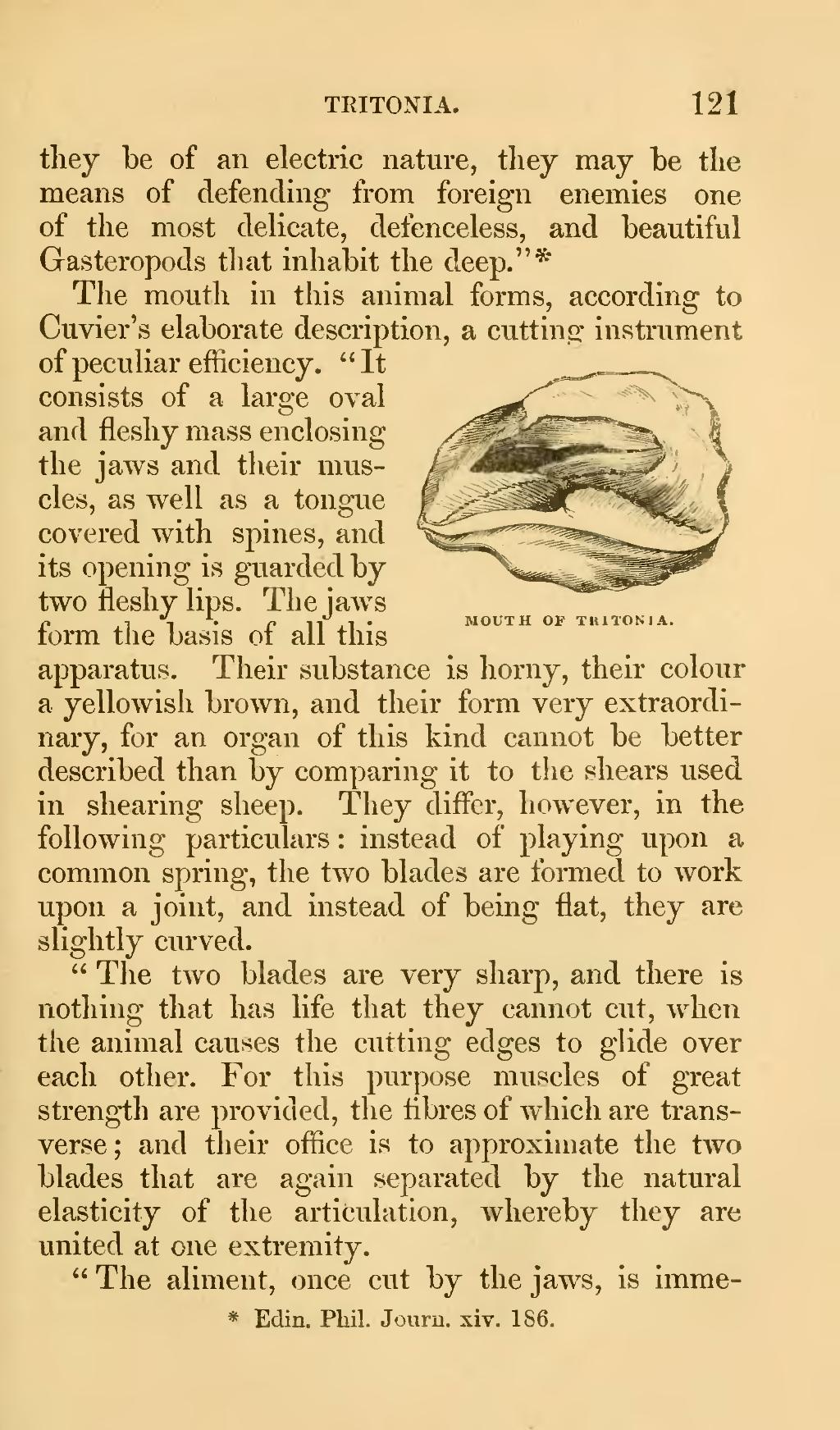they be of an electric nature, they may be the means of defending from foreign enemies one of the most delicate, defenceless, and beautiful Gasteropods that inhabit the deep."[1]

MOUTH OF TRITONIA.The mouth in this animal forms, according to Cuvier's elaborate description, a cutting instrument of peculiar efficiency. "It consists of a large oval and fleshy mass enclosing the jaws and their muscles, as well as a tongue covered with spines, and its opening is guarded by two fleshy lips. The jaws form the basis of all this apparatus. Their substance is horny, their colour a yellowish brown, and their form very extraordinary, for an organ of this kind cannot be better described than by comparing it to the shears used in shearing sheep. They differ, however, in the following particulars: instead of playing upon a common spring, the two blades are formed to work upon a joint, and instead of being flat, they are slightly curved.
"The two blades are very sharp, and there is nothing that has life that they cannot cut, when the animal causes the cutting edges to glide over each other. For this purpose muscles of great strength are provided, the fibres of which are transverse; and their office is to approximate the two blades that are again separated by the natural elasticity of the articulation, whereby they are united at one extremity.
"The aliment, once cut by the jaws, is imme-
- ↑ Edin. Phil. Journ. xiv. 186.
